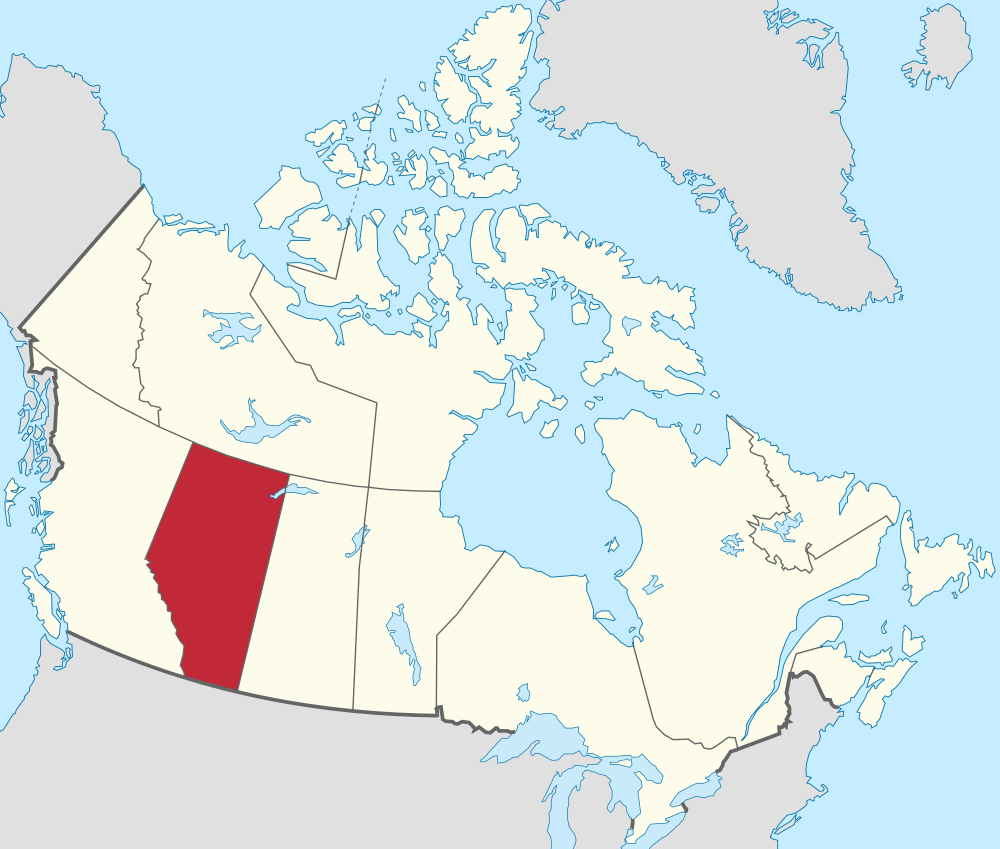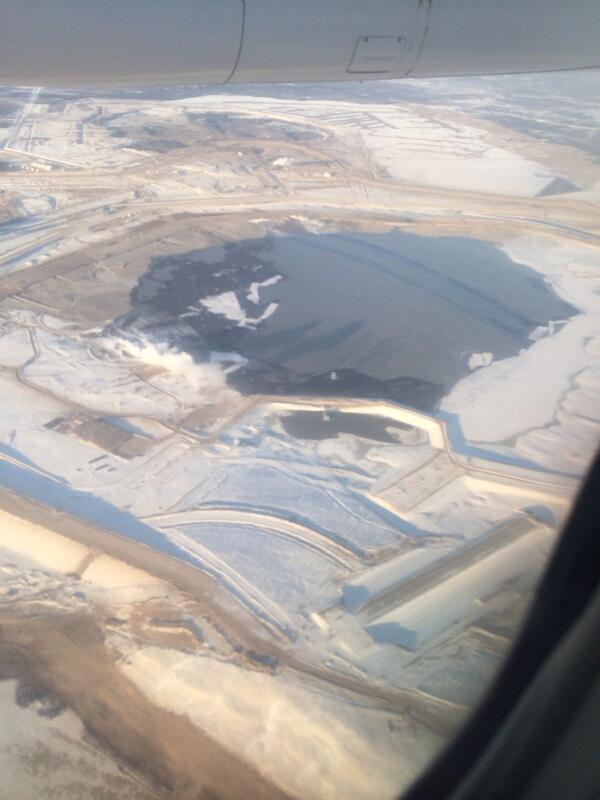 |
| Alberta Source: Wikipedia |
Alberta, like Pennsylvania, has a number
of interesting programs to reach the goal of the “3E’s” – particularly
regarding the challenges each faces environmentally with oil sands and
hydraulic fracturing, respectively. If
each implemented the programs of the other, I believe there would be solid
public policy advances to reach these energy policy goals. And, there is one policy, not yet implemented
by both
but recommended by Carnegie Mellon University researchers that I think
would be useful for both Alberta, Canada and Pennsylvania (and ideally in
multiple regions in the case of the United States).
First, the Canadian
programs that can serve as best practices for consideration in Pennsylvania and
elsewhere for hydraulic fracturing regions:
Outside organizations and individuals can also submit
non-confidential ideas for review through a program called E-tap. Submitters will hear within 10 days if their
proposed technologies are of interest.
Why should this program be of interest in the US? I believe
most industry leaders would agree with me that if there is an environmental
incident, it does not just affect the image of the company with the incident,
but the industry as a whole. They should
therefore want to work together to exchange ideas that help improve
environmental protection. On occasion, I
hear that anti-trust regulations are a barrier, but I believe with the proper
management, and if necessary, government help, anti-trust laws should not be a
concern. In addition, I sometimes hear from technologists who have ideas to
enhance the process or environmental protection, and from companies that say
they would like innovations to enhance their process. Yet there does not seem to be a centralized
location for idea submission and vetting.
Although, as discussed in this article,
results will not happen overnight, this is typical with research and
innovation. We do need to get started,
regardless. We did not have a presentation on COISA though it was mentioned
during the tour. One aspect that was
unclear to me from the tour or the website is the degree to which the academic community, non-governmental
organizations, and First Nation communities are involved. Although outside parties were mentioned, I do think that
you need to bring in that community, perhaps via an advisory board, to maintain
the integrity of the program.
(2) Canada-Alberta
Oil Sands Monitoring Program Information Portal and the Alberta Oil Sands Information
Portal: The Joint Oil Sands Monitoring Program (JOSM) This site includes
maps, monitoring site details including field data from scientist as well as
analysis and interpretations of that data.
The interactive map, for example, includes information on the results
from air, water, wildlife contaminants, and biodiversity disturbances. When you click on the “Google earth” style
map, you can get more information about that site and its results. More work is on the way with a goal of 2015 to
complete the activities outlined in the implementation
plan. COISA also plays a role here
with a monitoring working
group to provide industry input, focused on risk-based monitoring, to JOSM.
 |
| Interactive Map from Canada-Alberta Oil Sands Monitoring Program Information Portal |
The Alberta Oil Sands Information Portal also provides useful information on the location of facilities and the ability to download information for further analysis (as does the previous site). Click on a facility and you can see more detailed information about it. Provided below is a picture showing information on the Suncor facility we visited a few days ago.
 |
| Interactive Map from Alberta Oil Sands Information Portal |
In Pennsylvania,
this data is not easily accessible…and it should be…to enhance public policy
making and public confidence as well as identify what we do and do not know about the
potential impacts of hydraulic fracturing. Although there are efforts
underway to attempt to collect water data, what data is available is
silo’ed (as opposed to "one-stop" shopping) so you do not obtain a system’s perspective of the situation. In addition, it is not
easily accessible on a localized geographical basis as illustrated by the map
above.
(3) Climate Change and Emissions
Management Corporation(CCEMC):
Alberta takes its climate change strategy very seriously – much more
than just a handful of U.S. states. Legislation passed in 2007 requires large
emitters to reduce their greenhouse gas emissions. The mechanism – a carbon levy (aka tax) of C$15/tonne CO2e and how it provides funding for the CCEMC is described in the
graphic below.
Technologies are
funded that have the potential of reducing greenhouse gas emissions. So far, CCEMC has funded 51 projects – a
total commitment of C$212.8 million – on carbon capture and storage, energy
efficiency, greening fossil fuels, and renewables. Projects are funded not only in Alberta, but
elsewhere, including the United States.
The results of a call for proposals focused on a CCEMC grand
challenge on innovative carbon uses will be announced in about a
month. A new
call for proposals that will provide C$65 million was just announced. I’ll certainly pass this on to my colleagues
back at Carnegie Mellon University.
In the United States, researchers would love this sort of
funding stream for research activities – alas, the politics mean it is unlikely
to occur – but it is nice to see it working elsewhere.
 |
| Pennsylvania Source: Wikipedia |
Provided below is information on possible programs that may be worthy of consideration in Canada and Alberta.
(1) Center for Sustainable Shale
Development: This organization's mission, overseen by a multi-stakeholder board, "is to support continuous improvement and innovative practices through
performance standards and third-party certification” for the hydraulic fracturing industry. Performance standards thus far have been developed for air and climate (flaring limitations, green completion use, engine emission reduction, storage tank emission control) and surface & ground water performance standards (maximize water recycling, groundwater protection plan development, closed loop drilling, well casing design, groundwater monitoring, impoundment integrity, reduced toxicity fracturing fluid.)
 |
| Illustration of Difference between CCSD Performance Standards and Regulatory Standards Source: Except from CCSD, as analyzed by Eckert Seamens |
STRONGER, a non-profit, multi-stakeholder organization, that
will, when requested, conduct a review of a state’s environmental protection –
basically an audit to evaluate environmental protection strategies and
opportunities for improvement based on innovative practices. It is co-funded by federal energy and environmental agencies and a major trade association on a “no strings attached” basis. Volunteers provide reviews of the
programs. There is also longevity to the
program as assessments occur over a number of years so the degree to which
states are following recommendations can also be assessed. Pennsylvania’s first
assessment was in March 1992 and its most recent in September 2013.
Finally, these activities are not sufficient in Pennsylvania, and the following three groups have made recommendations to improve the process even further. Some of these independent assessments and related recommendations would also be useful in Alberta and Canada as a whole.
Finally, these activities are not sufficient in Pennsylvania, and the following three groups have made recommendations to improve the process even further. Some of these independent assessments and related recommendations would also be useful in Alberta and Canada as a whole.
(1) Shale
Gas Roundtable Report: This
report, developed by a multi-stakeholder group, managed University of Pittsburgh’s Institute
for Politics provides an independent assessment of the status of
government regulations. The report
provides “eight core, overarching recommendations that emerged from the overall
effort and specific recommendations within each of four focus areas – water,
midstream, research, and unitization and conservation.” Among its recommendations are:
The Commonwealth of Pennsylvania should increase investments in improving the accuracy, functionality, and transparency of its oil and gas data infrastructure.
The Pennsylvania Department of Environmental Protection should strengthen engagement with and support of various cross-sector and industry efforts to develop Best Management Practices.
Create a fund be to support rigorous and enhanced research to guide unconventional oil and gas development. The fund would have the following characteristics: diverse funding streams (state and federal governments, industry, and private philanthropy); regularly updated multi-year strategic research plan; scientifically rigorous (competitive funding awards and peer review); transparency of funding and of research outcomes; strong government and stakeholder relationships; supportive of informed policy and practice based on state-of-the-art science; able to synthesize existing research for shorter-term consumption by decision makers; and adequacy of funding support and staffing to implement a multi-year strategic research plan,
 (2) Carnegie Mellon
University Scott Institute for Energy Innovation policymaker guide: Shale Gas
and the Environment: Critical Need for a Government-University-Industry
Research Initiative: Similarly to those who participated in the Shale Gas Roundtable report, CMU researchers believe that a
government-university-industry initiative with regional clusters can provide a
'firewall' between the funding of research and research priorities, set a
common basis for conflict of interest policies, reduce duplication of research
efforts, and focus on policymaker information needs. Industry involvement is
important in identifying research priorities, using research results to
establish best practices, and providing the information researchers need to
better understand shale gas operations. As a result, industry initiation and
leadership are key criteria for the success of such an initiative. The proposed
regional research centers are important because the geology as well as public
concerns differ from one region to another. For example, while water scarcity is an issue in Texas, it is less so in Pennsylvania. This influences public concerns about the environmental challenges presented by issues such as oil sands and hydraulic fracturing.
(2) Carnegie Mellon
University Scott Institute for Energy Innovation policymaker guide: Shale Gas
and the Environment: Critical Need for a Government-University-Industry
Research Initiative: Similarly to those who participated in the Shale Gas Roundtable report, CMU researchers believe that a
government-university-industry initiative with regional clusters can provide a
'firewall' between the funding of research and research priorities, set a
common basis for conflict of interest policies, reduce duplication of research
efforts, and focus on policymaker information needs. Industry involvement is
important in identifying research priorities, using research results to
establish best practices, and providing the information researchers need to
better understand shale gas operations. As a result, industry initiation and
leadership are key criteria for the success of such an initiative. The proposed
regional research centers are important because the geology as well as public
concerns differ from one region to another. For example, while water scarcity is an issue in Texas, it is less so in Pennsylvania. This influences public concerns about the environmental challenges presented by issues such as oil sands and hydraulic fracturing.(3) Public Health Monitoring Data: In "Potential Public Health Hazards, Exposures and Health Effects from Unconventional Natural Gas Development," an Environmental Science and Technology journal article. As summarized in their abstract, there is a need for population-based studies:
"The rapid increase in unconventional natural gas (UNG) development in the United States during the past decade has brought wells and related infrastructure closer to population centers. This review
While here in Canada, there have been several news stories about public concern about potentially higher cancer rates and criticisms of a government report assessing this concern. Industry has indicated its support for more health monitoring data. Again, independent assessments are critical to credibility on this issue. One last related example is an analysis from Resources for the Future that brought together a diverse of stakeholders to identify what areas of risk created the most concern for each group. The twelve issues where there is overlap provides guidance on directing government and research efforts.
Of course, there will never be 100% confidence in environmental protection by all parties, but reasonable efforts will improve the confidence of most.











